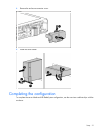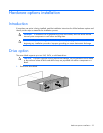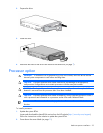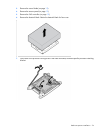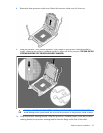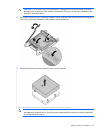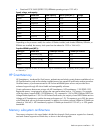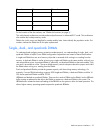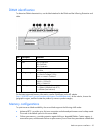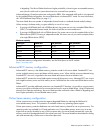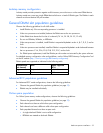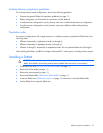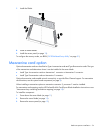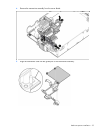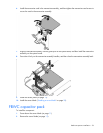
Hardware options installation 29
Channel Slot Slot number
1
A
E
1
2
2
B
F
3
4
3
C
G
8
7
4
D
H
6
5
For the location of the slot numbers, see "DIMM slot locations (on page 9)."
This multi-channel architecture provides enhanced performance in Advanced ECC mode. This architecture
also enables the Lockstep memory mode.
DIMM slots in this server are identified by number and by letter. Letters identify the population order. Slot
numbers indicate the DIMM slot ID for spare replacement.
Single-, dual-, and quad-rank DIMMs
To understand and configure memory protection modes properly, an understanding of single-, dual-, and
quad-rank DIMMs is helpful. Some DIMM configuration requirements are based on these classifications.
A single-rank DIMM has one set of memory chips that is accessed while writing to or reading from the
memory. A dual-rank DIMM is similar to having two single-rank DIMMs on the same module, with only one
rank accessible at a time. A quad-rank DIMM is, effectively, two dual-rank DIMMs on the same module. Only
one rank is accessible at a time. The server blade memory control subsystem selects the proper rank within
the DIMM when writing to or reading from the DIMM.
Dual- and quad-rank DIMMs provide the greatest capacity with the existing memory technology. For
example, if current DRAM technology supports 8-GB single-rank DIMMs, a dual-rank DIMM would be 16
GB, and a quad-rank DIMM would be 32 GB.
LRDIMMs are labeled as quad-rank DIMMs. There are four ranks of DRAM on the DIMM, but the LRDIMM
buffer creates an abstraction that allows the DIMM to appear as a dual-rank DIMM to the system. The
LRDIMM buffer isolates the electrical loading of the DRAM from the system to allow for faster operation. This
allows higher memory operating speed compared to quad-rank RDIMMs.



